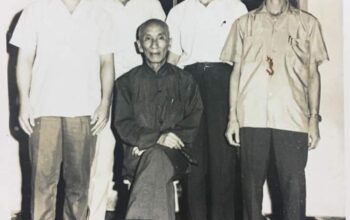Is There Sparring in Wing Chun?
Wing Chun is a traditional Chinese martial art known for its practicality, efficiency, and close-quarter combat techniques. Developed by the legendary female martial artist Yim Wing Chun, the style focuses on utilizing quick and direct strikes, close-range techniques, and efficient body positioning to overcome opponents. One question that often arises when discussing Wing Chun is whether or not sparring is a part of its training methodology. In this article, we will explore the role of sparring in Wing Chun and its importance in developing practical combat skills.
First and foremost, it’s important to understand that Wing Chun does indeed incorporate sparring into its training. However, the approach to sparring in Wing Chun may differ from other martial arts styles. Rather than emphasizing full-contact, free-form sparring seen in some combat sports like boxing or MMA, Wing Chun places greater emphasis on controlled drills and exercises designed to develop specific skills.
One of the main reasons for this approach is that Wing Chun is primarily a self-defense system, where practitioners aim to neutralize attacks quickly and effectively rather than engaging in prolonged fights. As a result, Wing Chun training focuses on developing attributes such as sensitivity, timing, and precision, which are crucial in close-quarters combat scenarios.
To develop these attributes, Wing Chun practitioners engage in various forms of sparring-like exercises. One common training method is “Chi Sao,” which translates to “sticky hands.” Chi Sao involves two practitioners maintaining contact with each other’s forearms while attempting to strike and defend. This exercise enhances sensitivity, reflexes, and the ability to read and react to an opponent’s movements. Chi Sao is often practiced in a semi-structured manner, allowing practitioners to gradually increase the intensity and complexity of the drills.
Another sparring-like drill in Wing Chun is the “Luk Sao” or “rolling hands” exercise. This drill focuses on developing sensitivity and the ability to redirect an opponent’s force. Practitioners engage in controlled exchanges, continuously rolling their arms and hands while applying and neutralizing techniques. Luk Sao enables Wing Chun practitioners to refine their trapping, controlling, and countering skills.
Additionally, Wing Chun practitioners may engage in controlled sparring scenarios known as “San Sau” or “free-hand sparring.” San Sau involves two practitioners applying Wing Chun techniques in a more dynamic and spontaneous manner while maintaining a controlled level of contact. It allows practitioners to test their techniques, timing, and footwork in a simulated combat environment. However, it is important to note that safety and control are always emphasized during San Sau to prevent unnecessary injuries.
While sparring is an essential component of Wing Chun training, it is important to acknowledge that different schools and instructors may have varying approaches to its implementation. Some schools may place more emphasis on sparring, incorporating elements of full-contact training or cross-training with other martial arts styles. Others may prioritize the drills and exercises that develop specific Wing Chun skills, viewing sparring as a supplemental practice.
Ultimately, the presence of sparring in Wing Chun training depends on the goals of the practitioner and the teaching methodology of the school they attend. However, regardless of the approach, the underlying principle of Wing Chun remains consistent – to develop efficient and effective combat skills for self-defense.
In conclusion, sparring is indeed a part of Wing Chun training, although its specific implementation may vary. Wing Chun utilizes controlled drills and exercises such as Chi Sao, Luk Sao, and San Sau to develop sensitivity, timing, and practical combat skills. By emphasizing these training methods, Wing Chun practitioners cultivate the attributes necessary for close-quarter combat scenarios, enabling them to neutralize opponents efficiently.







